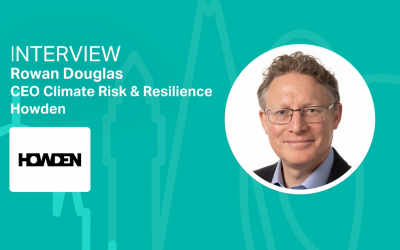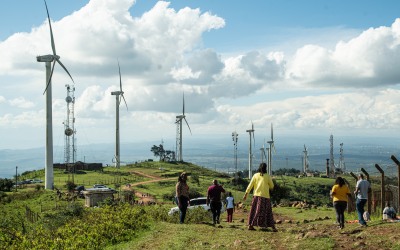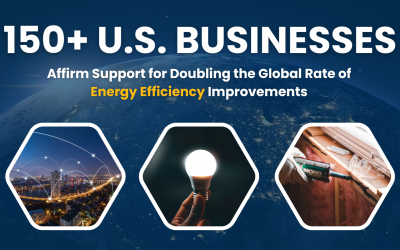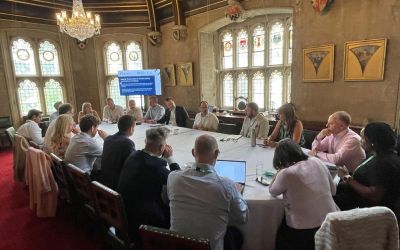Bob Hinkle on how EaaS can help achieve 2050 targets and drive a green, resilient recovery
Ahead of the Sustainable Investment Forum North America 2022, Bob Hinkle, President & CEO at Metrus Energy talks to Climate Action about how EaaS can help achieve 2050 targets and drive a green, resilient recovery.

Ahead of the Sustainable Investment Forum North America 2022, Bob Hinkle, President & CEO at Metrus Energy talks to Climate Action about how EaaS can help achieve 2050 targets and drive a green, resilient recovery.
What is Energy as a Service (EaaS)?
I think of Energy as a Service as a practical answer to the number one question asked by industrial, commercial and institutional customers thinking about making sustainability investments: “How do I take significant action to reduce carbon emissions and how will I fund it?” For most customers, EaaS is a really good technical and financial solution for large scale energy efficiency and renewable energy projects because it bundles energy savings from efficiency upgrades and renewable projects without any upfront costs for the customer. A true energy “as a service” offering provides 100 percent financing by the EaaS provider; is pay-for-performance (the customer pays for measured energy savings or renewable energy generated); provides third-party ownership of project equipment for the term of the agreement; and arranges and pays for ongoing services for the life of the project.
How does EaaS help achieve 2050 targets and drive a green, resilient recovery?
The 2050 target of being net zero simply cannot be accomplished without an enormous influx of private sector investment in general and energy efficiency investments specifically. You simply can’t “CapEx yourself” to your goals. According to IEA, annual investments in clean energy needs to more than triple to $4 trillion by 2030. Close to 70% will be driven by private sector investment– corporations and investors. Building retrofits, installations of electric vehicle (EV) charging infrastructure and other sustainability initiatives all require an enormous amount of up-front capital investments. EaaS is the financial bridge to getting sustainability projects done. No matter how large or complex an organization is, EaaS can bundle efficiency upgrades and technologies across locations and throughout buildings using a wide range of technologies and equipment, which maximizes energy savings and CO2 reductions and gets projects funded that might otherwise get pushed out or deferred.
What challenges does it overcome for companies with ambitious GHG reduction targets?
Being able to finance a large-scale project without having to use CapEx is a huge benefit for customers with a large energy spend.. EaaS customers are using energy efficiency investments as a tool to speed the implementation of sustainability initiatives with the added benefits of reducing operating costs while accelerating progress toward sustainability targets. Direct and indirect carbon emissions are demonstrably reduced (and tracked and reported) through improvements like advanced building systems, automation and analytics, and updated HVAC, boilers, and lighting systems. By bundling different energy efficiency and building technologies to deliver a more palatable payback period with amplified savings and environmental impact, (and eliminating the traditionally high upfront costs of undertaking energy projects) customers can “think big,” and take on more comprehensive projects that yield bigger GHG reductions. Further, energy efficiency is the cheapest and quickest route to reducing greenhouse gas emissions. So EaaS really solves a lot of the most challenging issues for comprehensive energy efficiency and renewable energy projects.
Is EaaS a financing solution that is consistent with a consolidated approach to target setting?
Absolutely. Because the tracking and reporting of energy savings and renewable energy generated is built into the project, EaaS facilitates the reporting of reductions in carbon emissions with embedded standardized climate disclosures. Corporate sustainability commitments are becoming increasingly mandated and EaaS can help businesses, municipalities, schools, and hospitals decarbonize their operations. EaaS also makes it easier for sustainability teams to track and gain insight on project energy savings and carbon reductions through performance dashboards and other automated monitoring tools.
What are some examples of where EaaS is making a difference?
As our project portfolio demonstrates, Energy as a Service is a powerful vehicle for accelerating the transition to a low-carbon energy future. As detailed in our 2021 Impact Report our projects -- encompassing more than 690 sites in 32 states –– saved 109,463 metric tons of CO2 and 1,171,662 MMBtu of energy (equal to 202,011 barrels of oil). Nearly half of our projects featured three or more energy efficiency measures, which underscores how EaaS allows customers to broaden the scope of their sustainability initiatives and make a bigger difference faster.
Last point on "making a difference": I believe that tracking and reporting on both the environmental and financial performance of energy investments is essential to ensuring that real progress is being made. It increases accountability and illuminates the climate impact for customers, partners, and communities. It's why Metrus became the first EaaS provider to publish an annual impact report, a precedent we hope others in our industry will follow.
Bob Hinkle will be speaking at the Sustainable Investment Forum North America on the 22 September. Register now to join him at the leading finance event at Climate Week NYC.






